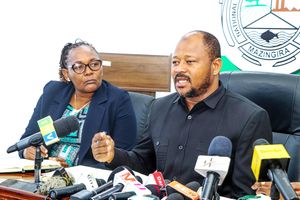Technology institutions light 500 Kilimanjaro villages with free solar systems

What you need to know:
The project – graced by the Kilimanjaro Regional Commissioner Anna Mghwira - has the capacity of generating 10KW.
Hai. Nelson Mandela African Institute of Science and Technology (NM-AIST) in collaboration with South Korea’s innovation Technology and Energy Centre (iTEC) has supplied free solar power to over 500 Mkalama villagers in Masama Ward, Hai District.
The project – graced by the Kilimanjaro Regional Commissioner Anna Mghwira - has the capacity of generating 10KW.
Gracing the event, Ms Mghwira called on the project beneficiaries to use the energy for establishing small scale business ventures that may have positive impacts on their economic lives.
She said the NM-AIST and iTEC joint research has solved challenges facing villagers.
South Korea’s envoy to Tanzania Song Geum-Young said the Asian country would continue supporting solar power supply to other villages in a bid to stimulate socio-economic growth in the country.
“Water is life, a Tanzania’s saying goes, but electricity is the light which radiates hope in darkness. I congratulate residents of this village for effectively taking part in this project,” the envoy said.
Geum-Young said Tanzania and South Korea have enjoyed cordial bilateral ties for quite a long time and that Tanzania opened its embassy in Seoul in December last year to further cement the relations and economic diplomacy, in particular.
Professor Sung-Hoon Ahn, the iTEC head, explained that 5KW out of the total 10KW generated will be supplied to villagers free of charge and that the remaining 5KW will belong to the village authorities for them to establish productive activities required for sustaining the project.
Prof Ahn said much as the villagers engaged in cultivation of onions; iTEC is intending to add another solar power plant tailor-made for an irrigation scheme.




